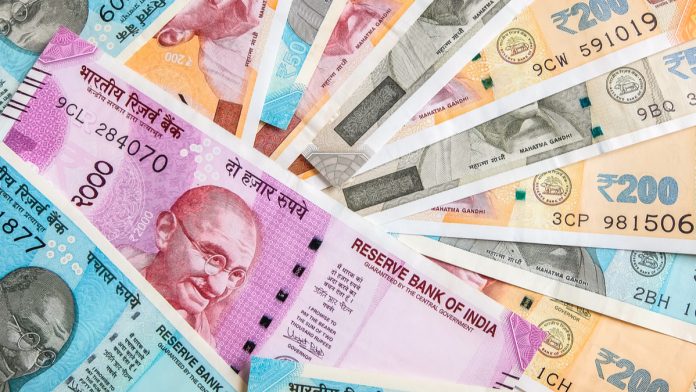- Indian Rupee (INR) rises for a third day
- Oil prices ease from yearly high
- US Dollar (USD) eases from a 10-month high
- US core PCE data is due
The US Dollar Indian Rupee (USD/INR) exchange rate is falling for a third straight day. The pair fell -0.04% in the previous session, settling on Thursday at 83.15. At 14:30 UTC, USD/INR trades -0.09% at 83.07 and trades in a range of 83.03 to 83.22.
The Indian rupee is opened stronger as US treasury yields ease and US crude oil falls away from its yearly high. Crude oil prices had risen to almost $94 a barrel earlier in the week on tight supply concerns.
Separately India has missed out on being included in the Footsie Russell government bond index just a week after JP Morgan said India would be part of its influential emerging market bond index starting next year. Expectations of inclusion in the Footsie index were not very high so the market reaction has been muted.
The US Dollar is falling across the board. The US Dollar Index, which measures the greenback versus a basket of major currencies, trades -0.45% at the time of writing at 105.75 as it eases from a 10-month high.
The US dollar is falling for a second straight day, but it’s still on track to book gains across the week, marking the 11th straight week of gains, and the US dollar is also set to end the quarter higher.
The greenback has been boosted across the quarter by data highlighting the resilience of the US economy higher oil prices and a tick up in inflation which has caused the Federal Reserve to adopt A more hawkish stance indicating another rate hike before the end of the year and less easing next year.
Today yields have come off slightly which is putting the greenback lower as investors look ahead to core PCE data which is the Federal Reserve’s preferred gauge for inflation. Core PCE is expected to cool to 3.9% year on year in August, down from 4.2% in July. Meanwhile, personal spending is expected to rise 04% after rising 0.8% in the previous month.
Hotter-than-expected inflation and strongest spending could support the Federal Reserve’s hawkish stance and lift the US dollar higher.





